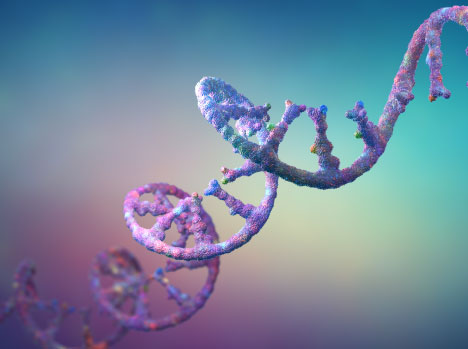SAN DIEGO, CA—“The future of cancer vaccines is now.”
That’s the first thing that Geneos Therapeutics’ CEO and president, Niranjan Sardesai, PhD, said in an interview with GEN Edge at AACR 2024.
“We’re at a point in time where there is no longer any doubt that vaccines have a role to play in treating cancer,” said Sardesai. “So much progress has been made in how we look at antigens and the requirements for tumor immunity. It’s not the case of, ‘Does this biology make sense?’ It’s about, ‘How do we translate those biological understandings into products?’”
Sardesai is doing this at Geneos, a clinical-stage biotherapeutics company focused on developing DNA-based personalized therapeutic cancer vaccines (PTCVs) for hepatocellular carcinoma (HCC) patients.
In non-oncology speak, that is not a great place to be. Depending on the study, HCC sits somewhere toward the top of the rankings for leading causes of cancer-related deaths and poor survival prognosis. According to Sardesai, HCC has a five-year survival rate of less than 10 percent and is the second most lethal cancer after pancreatic cancer.
“[HCC] has been a graveyard of immunotherapies—nothing has worked,” said Sardesai. We wanted to go into the toughest spaces to prove that cancer vaccines have a role to play in this space.”
In a Nature Medicine study published this week, Geneos reported the results of its Phase I/II clinical trial GT-30, which tested a PTCV and a cytokine adjuvant along with pembrolizumab (Keytruda) in 36 second-line patients with advanced hepatocellular carcinoma (HCC) previously treated with a multi-tyrosine kinase inhibitor.
Geneos’ approach shows a 30.6 percent (11/36) response rate, including three complete responses and eight partial responses. To put that into perspective, the response rate historically for pembrolizumab (Keytruda) is 16.9 percent, and as an overall class, anti-PD1 monotherapy for second-line advanced HCC has shown response rates of 11–18 percent in seven Phase II and Phase III clinical studies enrolling more than 1,400 patients. Additionally, the median overall survival in GT-30 was 19.9 months, compared to 12.9 months reported for the prior second-line studies of pembrolizumab and 15.1 months for other anti-PD-1 monotherapies. Geneos also reported seeing positive effects of their PTCV approach on metastatic lesions.
“Many peers are looking at recurrence-free survival, which is great, but the question remains: Are you able to see tumor regressions in bulky, advanced, unresectable, metastatic cancers?” said Sardesai. “We are seeing that the primary tumor shrank and these distal lesions. I think we are the first to show meaningful tumor reductions in advanced late-stage disease. All of this comes at no cost to the toxicity or tolerability of the treatment. We are seeing remarkable improvements in efficacy with no worsening of safety and tolerability. That is what makes me incredibly optimistic about where we go next.”
Neo-antigen personalization with plasmids
For any nucleic acid-based cancer vaccine to work, the right combination of antigens must be selected to elicit T-cell responses that effectively reduce tumor burden and are cost-effective.
One of the biggest challenges in HCC is that it is a low tumor mutational burden and an immune-excluded tumor, and without T cells, immunotherapies do not work. Even if the PTCV works, the biggest drawbacks of individualized treatments are that they take too long to produce and are too expensive.
DNA has unique advantages here. Every cell and gene therapy program starts with plasmid DNA, whether it is further processed into mRNA, cloned into viral vectors, or electroporated into T cells. The key obstacle to using DNA is delivery because injected naked DNA will not cross a cell membrane or survive long without being degraded.
To solve the DNA plasmid PTCV delivery problem, Geneos has produced three components: two plasmids, one expressing neoantigens and one expressing an adjuvant, with both delivered using an electroporation device.
No two liver cancers are the same. There are many different liver cancer origins, some that are viral (e.g., Hepatitis B) and some that are not (e.g., Nonalcoholic steatohepatitis, or NASH), and there are different mutational drivers.
To develop the personalized PTVCs, Geneos sequences the tumor genome, compares it to normal blood samples, and identifies all the DNA variants in the tumor. With the aid of bioinformatics, these variants are filtered for features indicative of targetability, such as whether the variant is non-synonymous and thus results in an amino-acid substitution. While there is some overlap in samples, such as driver mutations in classical cancer genes like P53, KRAS, and beta-catenin, Sardesai said that 99% of the mutations are unique to the patient.
Regarding the PTCV, Sardesai said that where most companies settle for a dozen or more of the best variants to target, Geneos shoots for 40 neo-antigens. This reflects the physical limitations of plasmid size—theoretically, a second plasmid with another 40 neo-antigens could be included. On average, each patient’s plasmid has around 30 unique, targetable antigens.
Sardesai said that capturing the tumor heterogeneity in the vaccine is critical to treating not only the primary tumor but also the metastasis.
“Looking at larger neoantigenic payloads—we’re treating patients with 40 neoantigens—I think that’s the key to being able to achieve tumor control, not only on the localized lesions but also on these metastatic lesions, because you’re covering a larger diversity of neo-antigens,” said Sardesai.
Skin—an immune satellite
The dual plasmids are delivered by intradermal electroporation, which can trigger immune cells in the skin to activate in response to pathogens that breach the skin’s barrier (immune priming).
There are three important cell types in the skin—keratinocytes, Langerhans cells, and dendritic cells—that play a role in immunity, and by transfecting the skin, Geneos’ approach is transfecting all three.
Exploiting the mechanism by which the skin produces an immune response upon infection, the electroporation of keratinocytes turns these cells into antigen-producing factories without the need for a virus. In this case, they express the antigens encoded in the PTCV and IL-12 plasmids. Dendritic cells are antigen-presenting cells that play a crucial role in activating adaptive immune responses. A subset of immature dendritic cells in the skin are highly specialized leukocytes that serve immunogenic and tolerogenic purposes.
Together, these three cells drive a CD8-directed response in the localized lymph nodes and, more importantly, the priming of T cells that hone in on the liver and kill tumorigenic cells.
“We’re not doing intra-tumoral delivery or delivering into the liver,” said Sardesai. “It’s like getting a flu shot, and then the immunity that’s created by the flu shot finds and kills the virus. Here, the immunity created by our cancer vaccine finds and kills the tumors.”
The early data from Geneos Therapeutics shows that activated and cytolytic T cells were found in the tumor. These cells were primed by the vaccine antigens, which Sardesai says had been challenging to accomplish. Moreover, 85 percent of the matched cells were CD8 T effector memory cells with an activated and cytolytic phenotype.
GT-30 was set up to study treated patients for two years, but Sardesai said that some of their patients are living longer because, he argues, the PTCV is driving the proper T-cell responses. This success has led to an amendment in the protocol to stop pembrolizumab after two years because that is the maximum approval for the immunotherapy in this setting. But if the patient is doing well, they can continue to be vaccinated as long as necessary.
While these initial results are positive, there is a lot of work left to be done as the data comes from only 36 patients. Whether this approach will apply to other tumors is completely unknown. Geneos has yet to test this approach in liquid tumors, but Sardesai believes the concepts remain the same.
“We could be looking at additional tumor types,” said Sardesai. “What’s stopping us right now is just being limited by funding.”

Check out our mRNA service to expedite your vaccine research
PackGene Biotech is a world-leading CRO and CDMO, excelling in AAV vectors, mRNA, plasmid DNA, and lentiviral vector solutions. Our comprehensive offerings span from vector design and construction to AAV, lentivirus, and mRNA services. With a sharp focus on early-stage drug discovery, preclinical development, and cell and gene therapy trials, we deliver cost-effective, dependable, and scalable production solutions. Leveraging our groundbreaking π-alpha 293 AAV high-yield platform, we amplify AAV production by up to 10-fold, yielding up to 1e+17vg per batch to meet diverse commercial and clinical project needs. Moreover, our tailored mRNA and LNP products and services cater to every stage of drug and vaccine development, from research to GMP production, providing a seamless, end-to-end solution.
Related News
[2024/11/22] Gene and Cell Therapy- weekly digest from PackGene
FeaturedNewsArticlesPackGene's NewsletterReceive the latest news and insights to your inbox.About PackGenePackGene Biotech is a world-leading CRO and CDMO, excelling in AAV vectors, mRNA, plasmid DNA, and lentiviral vector solutions. Our comprehensive offerings span...
Novartis seeks more bolt-on deals as it purchases neuro startup for up to $1.1B
Novartis is buying gene therapy and neuroscience biotech Kate Therapeutics in a deal worth $1.1 billion in upfront and milestone payments, the Swiss pharma confirmed to Endpoints News on Thursday. And Novartis is not done yet. It is still on the lookout for bolt-on...
Genprex Signs Exclusive License to Additional Gene Therapy Technologies with the University of Michigan for the Treatment of Lung Cancer
License includes Genprex's Reqorsa® Gene Therapy in Combination with ALK-Inhibitors for the Potential Treatment of ALK-Positive Lung Cancer AUSTIN, Texas, Nov. 20, 2024 /PRNewswire/ -- Genprex, Inc. ("Genprex" or the "Company") (NASDAQ: GNPX), a clinical-stage...
Vyriad announces strategic collaboration with Novartis to develop in vivo CAR-T cell therapies
Collaboration will combine Vyriad's lentiviral vector platform and Novartis expertise and leadership in cell therapy innovation ROCHESTER, Minn., Nov. 20, 2024 /PRNewswire/ -- Vyriad, Inc., a clinical-stage biotechnology company developing the next generation of...
Related Services

Plasmids GMP Services

AAV GMP Services


